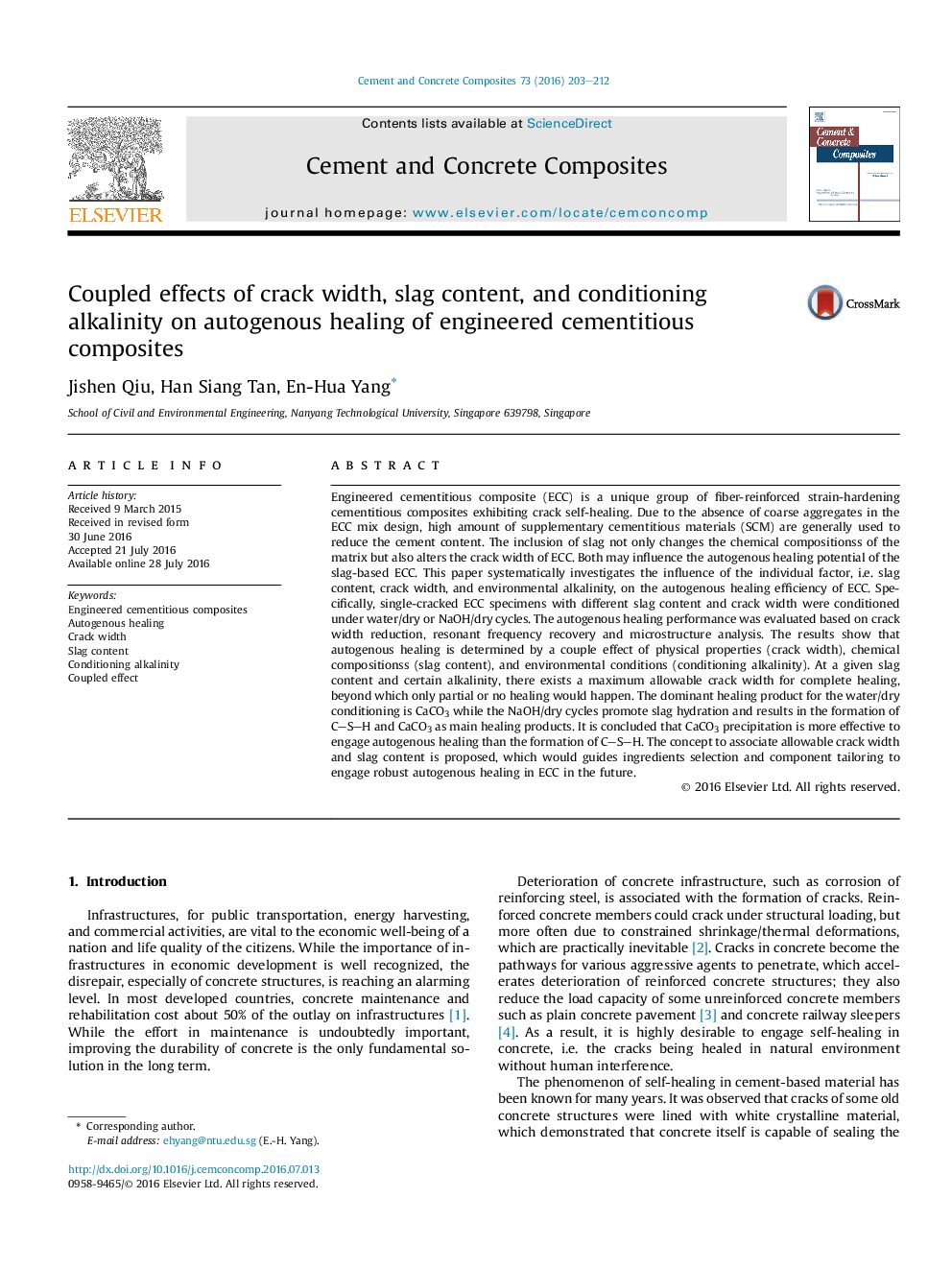| کد مقاله | کد نشریه | سال انتشار | مقاله انگلیسی | نسخه تمام متن |
|---|---|---|---|---|
| 1454242 | 1509660 | 2016 | 10 صفحه PDF | دانلود رایگان |
Engineered cementitious composite (ECC) is a unique group of fiber-reinforced strain-hardening cementitious composites exhibiting crack self-healing. Due to the absence of coarse aggregates in the ECC mix design, high amount of supplementary cementitious materials (SCM) are generally used to reduce the cement content. The inclusion of slag not only changes the chemical compositionss of the matrix but also alters the crack width of ECC. Both may influence the autogenous healing potential of the slag-based ECC. This paper systematically investigates the influence of the individual factor, i.e. slag content, crack width, and environmental alkalinity, on the autogenous healing efficiency of ECC. Specifically, single-cracked ECC specimens with different slag content and crack width were conditioned under water/dry or NaOH/dry cycles. The autogenous healing performance was evaluated based on crack width reduction, resonant frequency recovery and microstructure analysis. The results show that autogenous healing is determined by a couple effect of physical properties (crack width), chemical compositionss (slag content), and environmental conditions (conditioning alkalinity). At a given slag content and certain alkalinity, there exists a maximum allowable crack width for complete healing, beyond which only partial or no healing would happen. The dominant healing product for the water/dry conditioning is CaCO3 while the NaOH/dry cycles promote slag hydration and results in the formation of CSH and CaCO3 as main healing products. It is concluded that CaCO3 precipitation is more effective to engage autogenous healing than the formation of CSH. The concept to associate allowable crack width and slag content is proposed, which would guides ingredients selection and component tailoring to engage robust autogenous healing in ECC in the future.
Journal: Cement and Concrete Composites - Volume 73, October 2016, Pages 203–212
